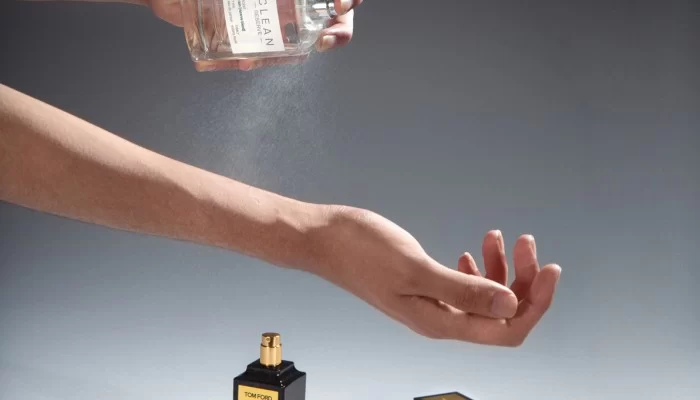- why-layering-perfume-is-a-game-changer
- understanding-the-anatomy-of-a-layered-scent
- most-popular-perfumes-for-layering-and-why-they-work
- real-user-stories-of-fragrance-layering
- how-to-start-your-own-layering-journey
1. Why Layering Perfume Is a Game Changer
Layering perfume is no longer just a niche art — it’s become a defining ritual for fragrance lovers seeking originality. Rather than relying on a single scent, layering empowers you to personalize your aroma, highlight mood shifts, or even match your fragrance to seasons or occasions.
Social media platforms like TikTok and Instagram have sparked layering trends that challenge traditional perfume use. One viral example in 2024 was the unexpected blend of vanilla musk with crisp green tea — a combination praised for its warmth-meets-freshness vibe. These trends have only boosted the demand for the most popular perfumes for layering, with users now actively seeking versatile, blendable bases.
2. Understanding the Anatomy of a Layered Scent
2.1 The Role of Top, Middle, and Base Notes
To layer effectively, understanding fragrance structure is crucial. Top notes hit first — think citrus or herbs. Middle notes, or “heart notes,” like florals and spices, carry the personality. Base notes such as vanilla, sandalwood, or oud provide depth and longevity. When layering, each level should either complement or contrast strategically.
2.2 Balancing Bold with Subtle
Not every perfume is layering-friendly. A strong oud-based fragrance might overpower a delicate floral unless balanced correctly. That’s why the best layering perfumes often feature transparent or linear compositions — they play well with others and allow space for layering dynamics to develop.
3. Most Popular Perfumes for Layering and Why They Work
3.1 Maison Francis Kurkdjian Baccarat Rouge 540
This cult favorite is known for its radiant amber and jasmine blend. It acts as an opulent base for lighter fruity or floral scents. Many users layer it with citrus-forward fragrances to cut through the sweetness and add sparkle.
3.2 Jo Malone English Pear & Freesia
A go-to layering scent due to its clean, fruity-floral profile. It pairs beautifully with woodsy or spicy perfumes, amplifying either freshness or warmth. It’s also popular in the spring layering scene, often matched with neroli or rose-based perfumes.
3.3 Glossier You
Marketed as a skin scent, Glossier You blends musks and pink pepper in a way that makes it a seamless base layer. Users report combining it with floral or gourmand scents to create a subtle but noticeable personal signature.
3.4 Le Labo Santal 33
With its smoky, leathery backbone, Santal 33 lends a bold edge to softer perfumes. It’s often layered with vanilla or coconut scents to create contrast, popular among those who want an adventurous yet wearable outcome.
3.5 Replica Lazy Sunday Morning by Maison Margiela
This clean musky floral is a favorite for layering due to its subtle powdery finish. It enhances the cozy elements of other fragrances without stealing the spotlight — often layered with rose, violet, or even gourmand scents like almond milk.
4. Real User Stories of Fragrance Layering
Rachel, a nurse in Chicago, shared that layering Glossier You with a spritz of rosewater scent from her local apothecary made her feel “grounded yet elegant” during long shifts. Her colleagues often asked what she was wearing — and she loved being able to say it was her own custom blend.
Another layering enthusiast, Jordan, blends Santal 33 with a soft neroli cologne. He says the mix “reminds me of a campfire after rain, but still office-safe.” These stories underscore how scent becomes deeply personal when layering — every combination reflects a piece of the wearer.
5. How to Start Your Own Layering Journey
5.1 Start with a Base Scent You Love
Pick a fragrance that resonates with you — even if it’s simple. A good layering base is usually musky, woody, or lightly floral. Build around it by adding contrast: sweetness, spice, citrus, or green notes, depending on what feeling you want to evoke.
5.2 Use Testing Strips or Pulse Points
Try layering on paper or your wrist before committing. Sometimes a combo smells great in the air but muddles on the skin. Testing helps you find pairings that evolve well over time.
5.3 Let the Fragrances Breathe
Apply the base scent first and wait a minute before adding the second. This gives each layer space to unfold. The result is a more natural and evolving scent trail — one that’s far more interesting than a one-note perfume.
Still unsure where to begin? Scent Snob offers expertly curated guides and tools to help match your style with the best layering perfumes available. Whether you're drawn to bright florals, cozy vanillas, or deep ambers, there’s a blend waiting to be discovered — by you and for you.


0 comments